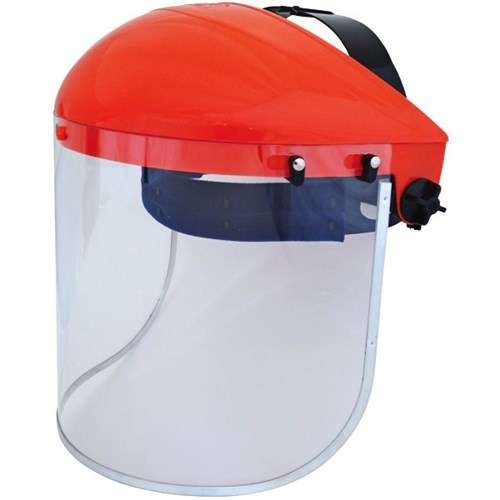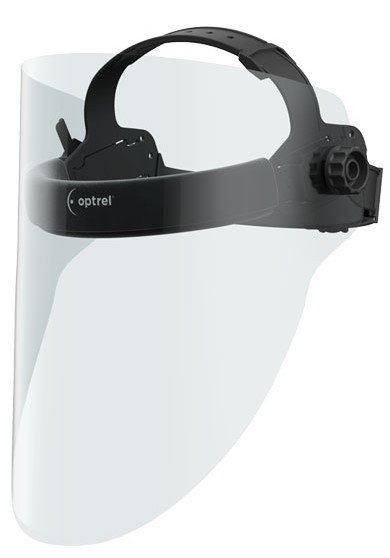FACE SPLASH SHIELD, antifog, 19x33cm + headband, reus., PPE
Valid Article
FACE SPLASH SHIELD, PPE, reusable
Definition
A clear, transparent guard intended to provide full face cover, to protect (shield) the healthcare worker from blood and other body fluid splashes while performing a clinical or laboratory procedure. It is commonly known as a splash shield.
Specifications
Quality Standards Comment
- PPE Category II
ISO 16321-1:2021: Eye and face protection for occupational use - Part 1: General requirements
- ANSI/ISEA Z87.1 American National Standard for Eye and Face Protection (for use in industry)
There are currently no standards for face/eye protection against biological hazards. Recommendations for the proper selection of face shields for infection control must rely on currently available knowledge, the task to be performed and the anticipated risk associated with the procedure.
Technical specifications
The selection of the most appropriate face shield model(s) will depend on the circumstances of exposure, other PPE used concurrently, and personal vision needs
Visor (= lense = window)
Visors are available in different lengths that include half facepiece length extending to the mid-face, full facepiece length that extends to the bottom of the chin, and a face/neck length that also covers the anterior neck area. length +/- 20 cm, width +/- 30 cm
Most visors are curve around the face and come in different widths; wider visors offer more peripheral protection.
CDC recommendations: sufficient width to reach at least the point of the ear. In addition, visors should have crown and chin protection for improved infection control purposes
Material: options
- Polycarbonate material provides
- the best impact protection and heat resistance
- chemical splash protection
- holds up well in extremely cold temperatures
- generally more expensive than other visor materials.
- Acetate provides
- the best clarity and tends to be more scratch resistant
- chemical splash protection
- may be rated for impact protection.
- Propionate material provides
- better impact protection than acetate
- chemical splash protection
- lower price point than both acetate and polycarbonate.
- Polyethylene terephthalate glycol (PETG) provides
- chemical splash protection
- may provide impact protection
- most economical option for faceshield choices.
Characteristics:
- non-reflecting, extremely light weight
- treated with advanced coatings
- anti-fog properties: indicated with an "N" on the visor
- scratch resistance features: indicated with a "K" on the visor
- optically clear with full peripheral vision
- fits over glasses or over-glasses
- masks or respirators can be changed without having to remove the shield
- reusable after proper cleaning and disinfection
Face shield frame
- made of lightweight plastic if use in healthcare
- different frame styles:
- adjustable and nonadjustable
- fully or partially encircle the circumference of the skull
- fully circumferential suspension systems include plastic headbands that are adjustable for comfort by a ratchet mechanism, pin-lock systems, or Velcro®
- nonadjustable systems employ elastic straps
- the frame can be detachable to allow for one frame to service many visors
Instructions for use
Maintenance
Reprocessing of reusable face shields:
A process for batch reprocessing may reduce burden on HCW providing direct patient care and ensure best reprocessing practices.
For example, used face shields may be placed in a bucket near the isolation/ treatment ward exit; the hygiene staff removes dirty face shield/ goggles and replaces them with clean ones.
Reprocessing includes washing with soap and water, rinsing with water (to remove residue), disinfection with 0.1% chlorine, and allowing to dry.
MSF requirements
Facial protection, specially the eyes, in case of respiratory infections (epidemic situation).
The articles manufactured according to PPE standard are the first choice. In case of absolute necessity, homemade articles are supplied.




